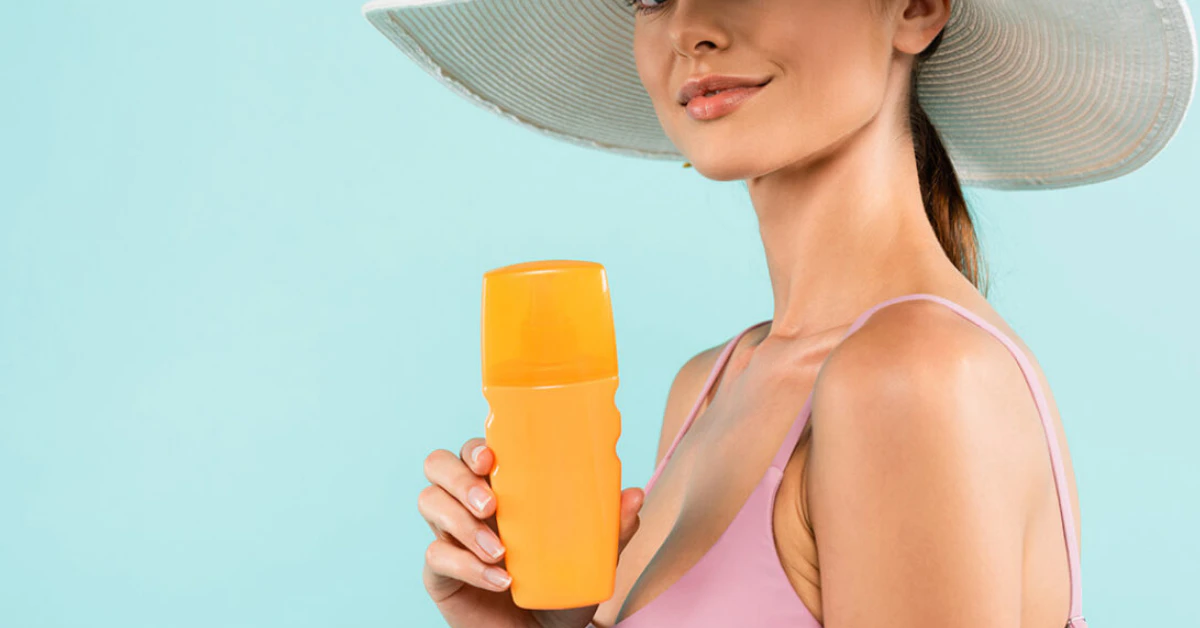Okay, let’s just say it out loud: shopping for the best tinted sunscreen for acne prone skin can feel like a cruel joke. You want to protect your skin, but you also want to look good—like, “I woke up like this” good, not “I’m hiding under a layer of beige goo” good. And if you’ve ever stood in the skincare aisle, squinting at labels and wondering if you’re about to make your breakouts worse, you’re definitely not alone. I’ve been there, and honestly, it’s a wild ride.
But here’s the thing: you don’t have to settle for sunscreen that feels heavy, looks weird, or—worst of all—leaves you with more pimples than you started with. There are options out there that can help you get that glowy, protected, and confident skin you deserve. So, let’s get into it. I’ll share what I’ve learned, what the experts say, and a few stories from the trenches. Ready?
Why Tinted Sunscreen? (What Does Tinted Sunscreen Do?)
Let’s start with the basics. Why even bother with tinted sunscreen in the first place? Isn’t regular sunscreen enough? Well, yes and no. Tinted sunscreen is like the Swiss Army knife of skincare—it does a little bit of everything. It protects your skin from the sun (obviously), but it also gives you a bit of coverage, evens out your skin tone, and sometimes even helps with things like blue light protection. It’s like makeup and skincare had a baby, and that baby is here to save your face.
But here’s the real kicker: the tint in these sunscreens isn’t just for looks. According to dermatologists, the iron oxides in tinted formulas can actually help block visible light, which is a big deal if you’re dealing with hyperpigmentation or melasma. So, it’s not just about looking good—it’s about real protection, too.
How Tinted Sunscreen Protects and Perfects
Imagine you’re running late, and you don’t have time for a full face of makeup. Tinted sunscreen steps in, giving you just enough coverage to blur out redness or old acne marks, while still letting your skin breathe. It’s not going to give you full glam, but it’s perfect for those “I want to look alive, but not overdone” days.
The Science Behind Mineral vs. Chemical Formulas
Now, let’s talk formulas. If you have acne prone skin, you’ve probably heard that mineral sunscreens (think zinc oxide and titanium dioxide) are your best friends. They sit on top of your skin and reflect UV rays, instead of soaking in. Chemical sunscreens, on the other hand, absorb UV and can sometimes irritate sensitive or breakout-prone skin. Tinted mineral sunscreens are like the gentle giants of the sunscreen world—protective, calming, and less likely to cause drama.
Real-World Example: How Tinted Sunscreen Fits Into Daily Routines
Take my friend Jess, for example. She’s got oily, acne prone skin and used to skip sunscreen because everything felt greasy. Then she tried a lightweight, tinted mineral sunscreen, and suddenly, her morning routine was cut in half. No more layering foundation over sunscreen—just one step, and she was out the door. Her skin? Happier than ever.
Expert Insights: Dermatologist Opinions on Tinted Sunscreen for Acne Prone Skin
Dermatologists love tinted sunscreen for acne prone skin because it’s a two-in-one: you get sun protection and a little coverage, without the heavy, pore-clogging feel of some foundations. Plus, the added iron oxides can help protect against visible light, which is a bonus if you’re dealing with stubborn dark spots.
Key Benefits of Tinted Sunscreen for Acne Prone Skin
So, what makes the best tinted sunscreen for acne prone skin stand out? Let’s break it down.
Non-Comedogenic Formulas—What to Look For
First things first: you want something that won’t clog your pores. Look for the magic words “non-comedogenic” on the label. This means the product is less likely to cause breakouts. But don’t just take the label’s word for it—check the ingredient list for things like coconut oil or isopropyl myristate, which can be sneaky culprits for acne.
Added Coverage Without Heavy Makeup
One of the best things about tinted sunscreen is that it gives you a little bit of coverage—enough to blur out redness or old acne scars—without feeling like you’re wearing a mask. It’s perfect for those days when you want to look put together, but not overdone.
Blue Light and Environmental Protection
Did you know that the blue light from your phone and computer can mess with your skin, too? Some tinted sunscreens are formulated to help protect against blue light and pollution, which is a game-changer if you’re glued to your screen all day (guilty as charged).
Case Study: User Experiences with Tinted Sunscreen for Oily Skin
Let’s talk about Sam. He’s got oily skin and was convinced that sunscreen would just make things worse. But after switching to a matte-finish tinted sunscreen, he noticed his skin actually looked less shiny throughout the day. No more mid-afternoon oil slicks—just smooth, even skin.
Comparison Table: Tinted Sunscreen vs. Regular Sunscreen for Acne Prone Skin
| Feature | Tinted Sunscreen | Regular Sunscreen |
|---|---|---|
| Coverage | Light, evens skin tone | None |
| Blue Light Protection | Often included (iron oxides) | Rarely included |
| Non-Comedogenic Options | Available | Available |
| Finish | Matte, dewy, or natural | Varies |
| Best for Acne Prone Skin | Yes, if non-comedogenic | Yes, if non-comedogenic |
Risks and Common Concerns (Does Tinted Sunscreen Cause Acne?)
Alright, let’s get real for a second. The question on everyone’s mind: does tinted sunscreen cause acne? The answer isn’t a simple yes or no. It depends on the formula, your skin type, and how you use it.
Ingredients to Avoid for Acne Prone Skin
Some ingredients are just bad news for acne prone skin. Watch out for heavy oils, certain silicones, and fragrances. If you see “isopropyl myristate” or “coconut oil” high up on the list, maybe put that bottle back on the shelf. Instead, look for lightweight hydrators like hyaluronic acid or squalane.
How to Patch Test and Spot Reactions
Here’s a tip I wish someone had told me sooner: always patch test. Dab a little of the new sunscreen on your jawline or behind your ear and wait 24 hours. If you wake up with a new breakout, you’ll know it’s not the one for you. It’s a small step, but it can save you a lot of grief (and concealer).
Personal Anecdote: When Tinted Sunscreen Went Wrong
I’ll never forget the time I tried a new “glow” tinted sunscreen before a big event. By lunchtime, my face looked like a disco ball, and by dinner, I had three new pimples. Lesson learned: what works for one person might not work for you. Don’t be afraid to experiment, but go slow.
Expert Advice: What to Do If You Break Out
If you do break out, don’t panic. Wash your face with a gentle cleanser, skip heavy makeup for a few days, and maybe try a soothing mask. And remember, one bad reaction doesn’t mean all tinted sunscreens are off-limits. It’s all about finding your match.
How to Choose the Best Tinted Sunscreen for Acne Prone Skin
So, how do you actually pick the right one? It’s not just about grabbing the first bottle that says “tinted.” Here’s what to look for.
Reading Labels: What Matters Most
Look for “non-comedogenic,” “oil-free,” and “fragrance-free” if your skin is sensitive. Check the SPF (at least 30 is best), and see if it’s a mineral formula (zinc oxide or titanium dioxide) if you’re extra breakout-prone.
Texture, Finish, and Shade Matching
Do you want a matte finish, or do you like a little glow? Is your skin oily, dry, or somewhere in between? The best tinted sunscreen for oily skin will usually have a matte or natural finish, while drier skin types might love something more hydrating. And don’t forget shade matching—some brands offer a range, while others are more “one shade fits most.”
Tinted Sunscreen for Oily Skin, Mature Skin, and Body
There’s a tinted sunscreen for everyone. If you’re dealing with oily skin, look for lightweight, mattifying formulas. For mature skin, a tinted sunscreen moisturizer for mature skin can help hydrate and smooth fine lines. And yes, there’s even tinted sunscreen for body—perfect for when you want a little glow on your arms or legs without the mess of self-tanner.
Quick Guide: Best Tinted Sunscreen Moisturizer for Mature Skin
If your skin is on the mature side, look for formulas with added antioxidants, peptides, or hyaluronic acid. These ingredients help plump and protect, so you get coverage and care in one step.
Sunscreen for Face Stick vs. Liquid vs. Cream—What’s Best for Acne Prone Skin?
Sticks are great for on-the-go touch-ups and targeted areas (like your nose or cheeks), but they can sometimes feel heavy. Liquids and creams are easier to blend and usually feel lighter. If you’re super sensitive, a mineral cream is often the safest bet.
Table: Top Recommended Products (with Pros, Cons, and User Ratings)
| Product | Pros | Cons | User Rating |
|---|---|---|---|
| EltaMD UV Elements Tinted | Non-comedogenic, lightweight, mineral-based | Limited shade range | 4.7/5 |
| Australian Gold Botanical Tinted | Matte finish, oil-free, affordable | Can be drying for some | 4.5/5 |
| La Roche-Posay Anthelios Mineral Tinted | Dermatologist-recommended, gentle | May leave a slight cast on deeper skin tones | 4.6/5 |
| Sun Bum Mineral Tinted Face Stick | Portable, easy to apply, water-resistant | Can feel thick if over-applied | 4.3/5 |
Application Tips for Maximum Protection and Minimal Breakouts
Okay, you’ve found your holy grail. Now what? Here’s how to get the most out of your tinted sunscreen—without inviting new breakouts to the party.
How Much to Use and How Often to Reapply
Most people don’t use enough sunscreen. You want about a nickel-sized amount for your face and neck. And yes, you need to reapply every two hours if you’re outside, or after sweating or swimming. It’s a pain, but your skin will thank you.
Layering with Other Skincare and Makeup
Apply your tinted sunscreen as the last step in your skincare routine, before any makeup. If you want more coverage, you can layer a little concealer or powder on top. Just keep it light—less is more when you’re trying to avoid clogged pores.
Step-by-Step Routine for Acne Prone Skin
- Cleanse with a gentle, non-stripping cleanser.
- Apply a lightweight, oil-free moisturizer (if needed).
- Dot on your tinted sunscreen and blend evenly.
- Touch up with a sunscreen for face stick if you’re out and about.
- Reapply as needed, especially if you’re sweating or swimming.
Mistakes to Avoid (From Real Users and Experts)
Don’t skip your ears, hairline, or neck—these spots burn fast. And don’t rely on makeup with SPF alone; it’s not enough. If you’re breaking out, try switching to a different formula or using a gentle exfoliant a few times a week to keep pores clear.
Conclusion
Finding the best tinted sunscreen for acne prone skin isn’t just about reading labels or following trends—it’s about listening to your skin, experimenting, and not giving up when something doesn’t work out. The right product should make you feel confident, protected, and, most importantly, comfortable in your own skin. Don’t be afraid to try new things, ask questions, or share your own stories. We’re all in this together, and your perfect match is out there. If you’ve found a tinted sunscreen you love—or if you’re still searching—let’s talk about it. Drop your thoughts, questions, or tips below. Your skin (and your future self) will thank you.


















Leave a Reply
You must be logged in to post a comment.